Lunchmeat Underpants
New Stuff and Inspiration
Generation Z, we now dub you Generation Wild.
Kids today spend less time outdoors than any other generation.
In fact, they only spend an average of 4-7 minutes a day outside in unstructured play. While that does mean they’re doing a great job of keeping off our lawns, it’s not so great for their health and happiness. Our friends at Great Outdoors Colorado, an organization that builds parks and trails around the state, were brave enough to take on this tremendous challenge, and they called on us to help. They challenged us to do something that had never been done before: create a campaign that would inspire kids to want to trade their phones and tablets for rocks and stinkbugs.
So we devised a plan to change this generation of kids, to turn them from Generation Z, a generation known for being helplessly addicted to their devices, into Generation Wild, a generation known for loving nature and enjoying the outdoors.

In order to do this, we had to first get inside the heads of the people who run these kids’ lives: their moms. We conducted ethnographic research with moms from all different ethnicities, backgrounds, and income levels around the state. What we found was that moms connected their own memories and experiences to the outdoors and already understood all the benefits that being outside had for their kids. The issue was finding the time and energy to organize and encourage their kids to play outside. Their lives were already packed full of responsibilities and commitments. Practices. School events. Countless other activities. What they needed was some inspiration and a little bit of help reprioritizing outdoor playtime.
Our idea was to make life easy on moms and remind them that getting your kids to enjoy nature doesn’t require a trip to the mountains; it’s right outside your door. Plus, to get kids interested, we would show off just how fun the outdoors can be. We launched Generation Wild with an enticing bucket list of things to do outside called 100 Things to Do Before You’re 12. Because while there are millions of amazing things to do outside, there are 100 things that you’ve absolutely gotta try when you’re a kid. It was the perfect way to give kids a taste of how fun the outdoors can be and inspire a lifelong love of nature in them.
To introduce Generation Wild and 100 Things to Do Before You’re 12, we created an integrated statewide campaign. Since moms spend a lot of time in front of screens, we knew we would need a strong digital campaign to get our message out. We used a highly-targeted, cross-platform approach. We leveraged video, display, and social media on desktop and mobile to hit moms wherever they may be online and coupled that with data analysis and optimization to ensure we were reaching moms who are the most receptive to our messaging. By combining a strong digital effort with our billboards and bus shelters, we were able to drive higher awareness and improved recall.
With the help of artists from Belgium, Israel, Toronto, NYC, and right here in Colorado, we created seven 15-second TV spots. The first spot introduced Generation Wild and the other spots each highlighted a different task from the list.
We also put up billboards and interactive bus shelter installations that helped kids tick things off the list.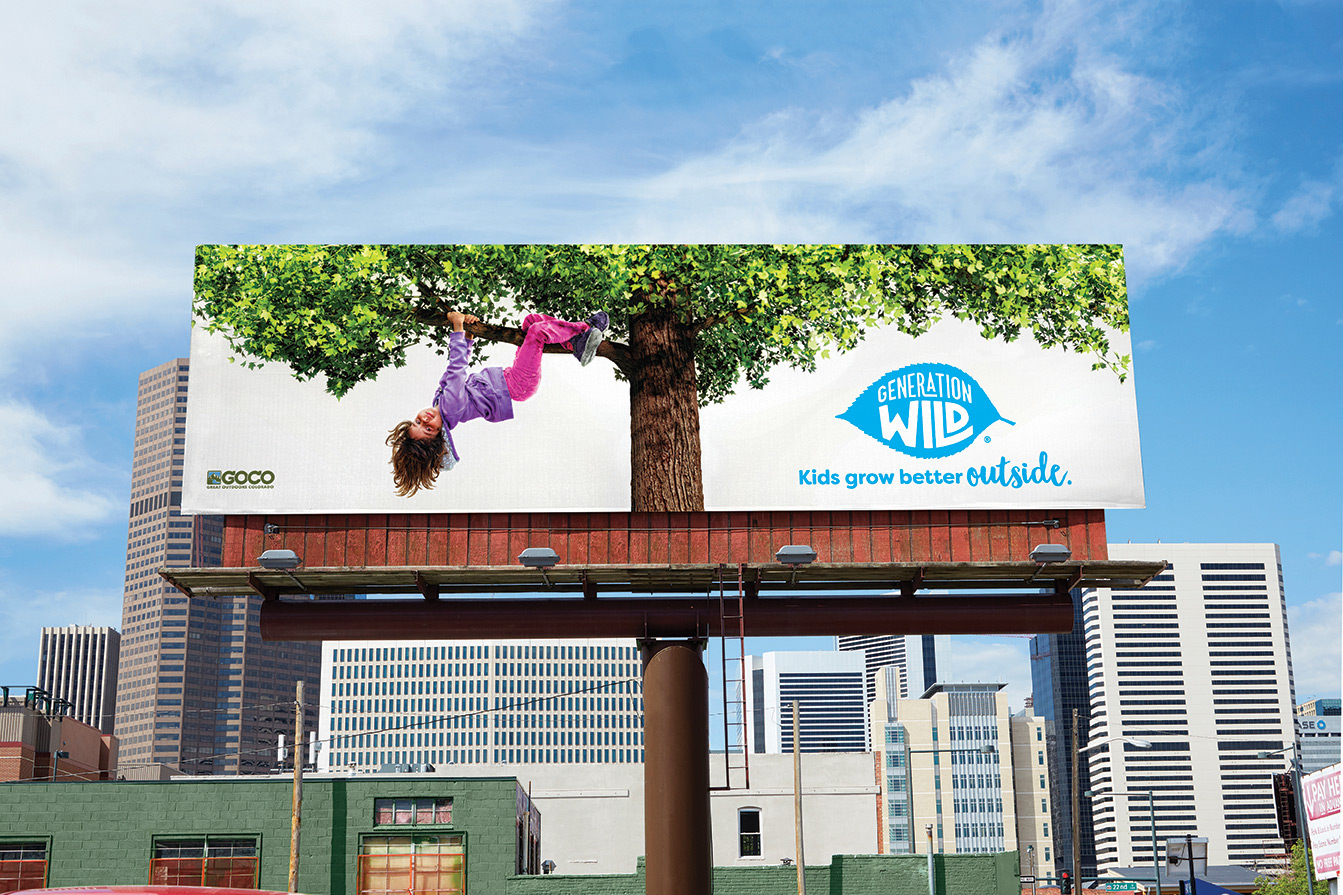


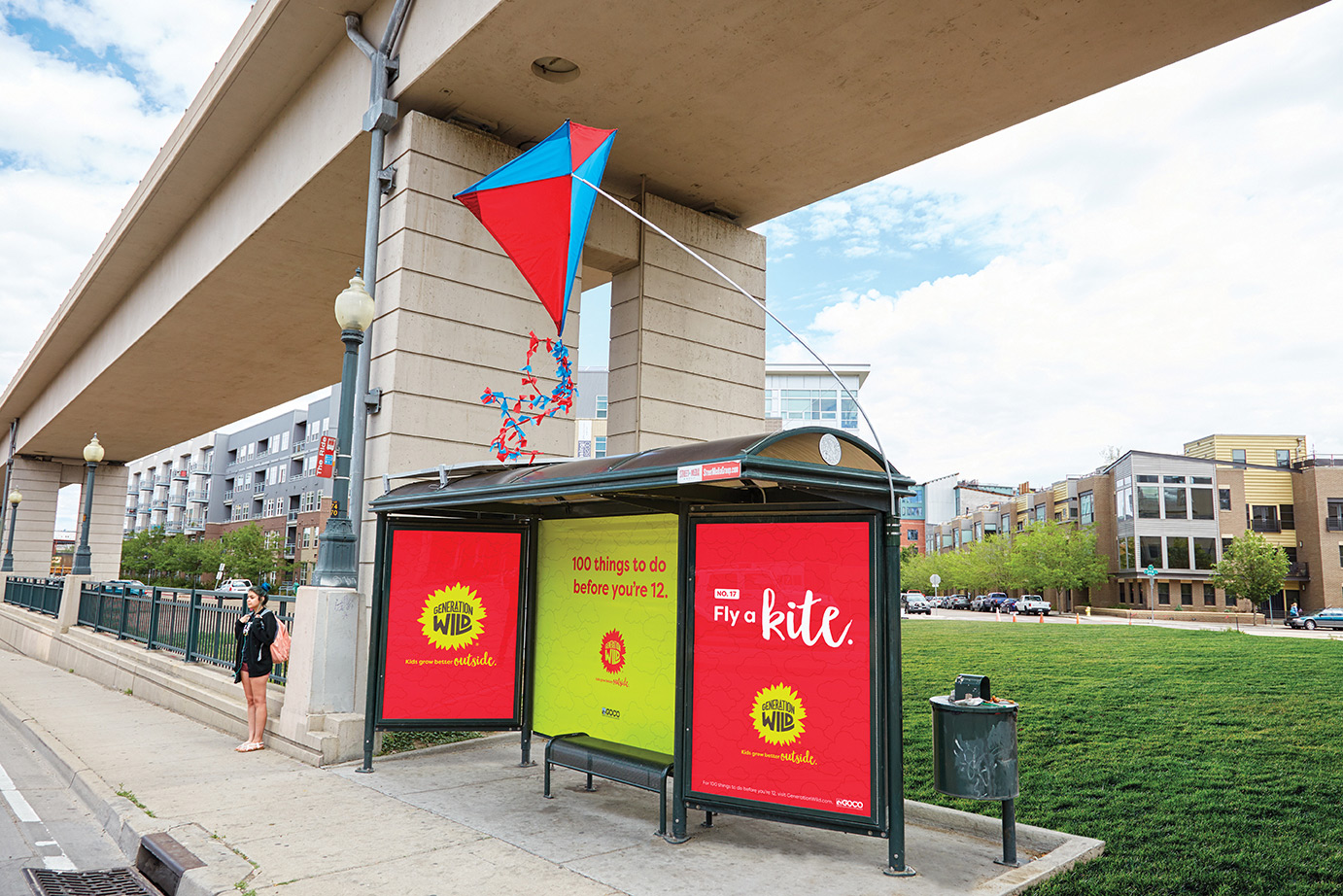
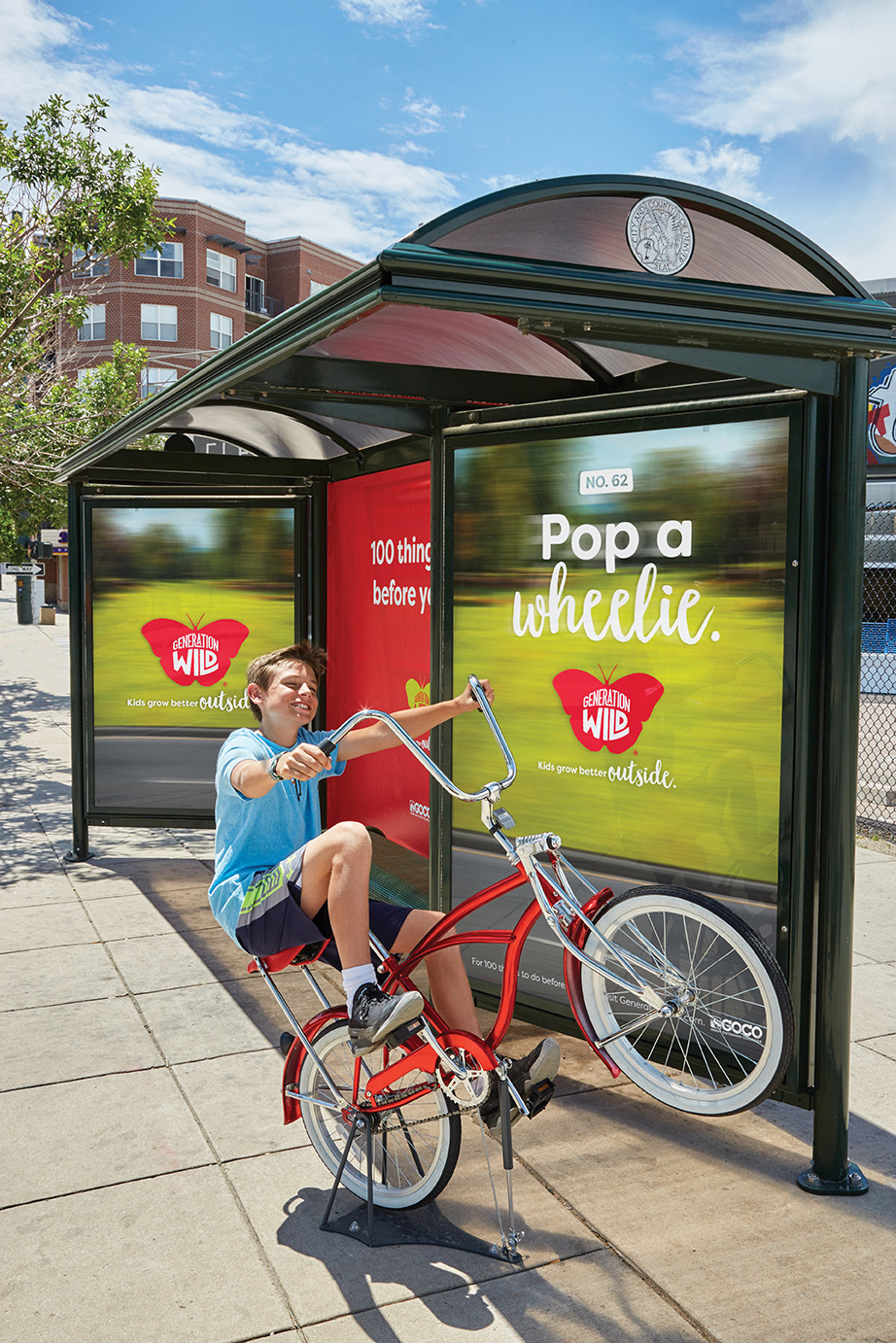
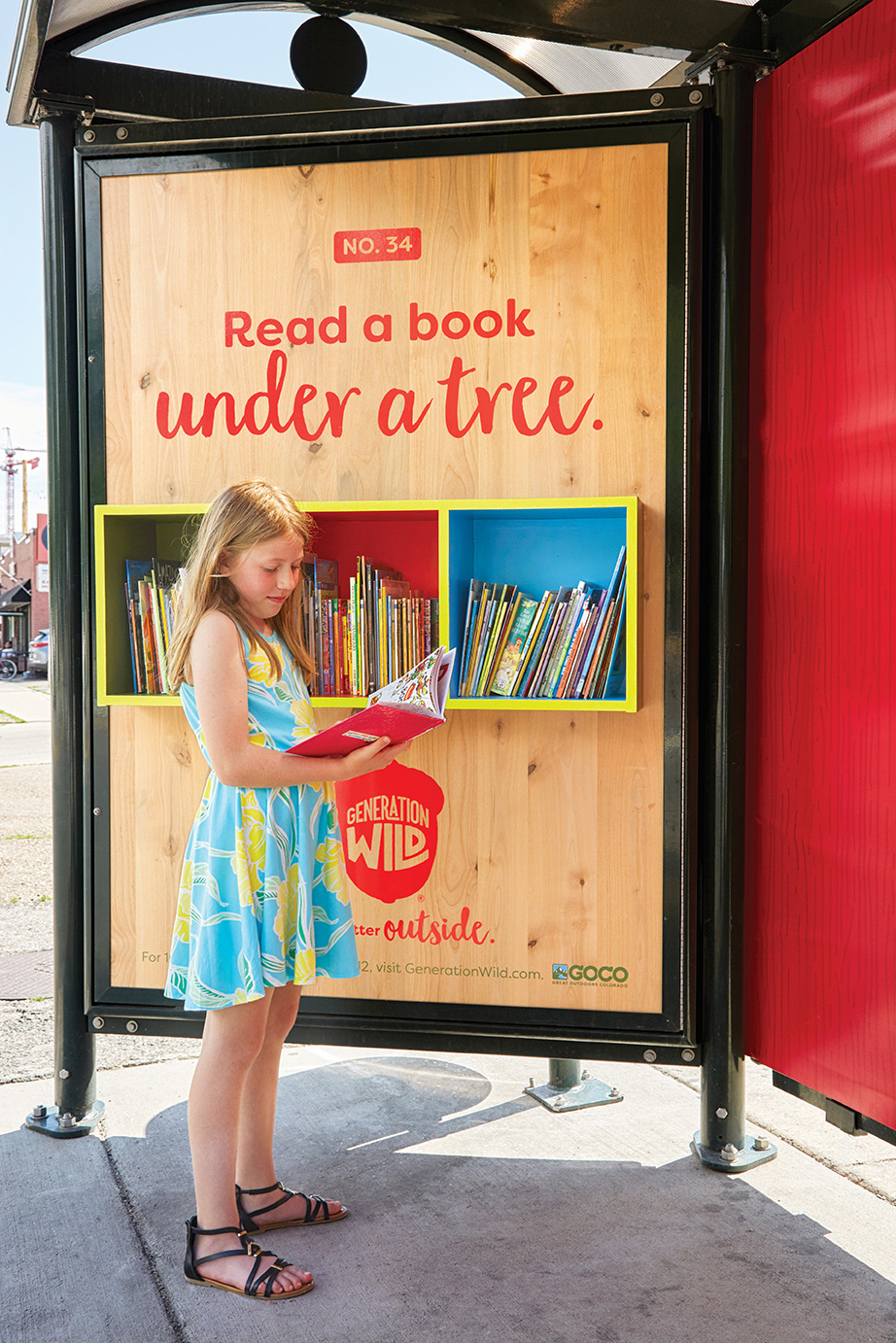

And of course, we hit parents where they are most, social media.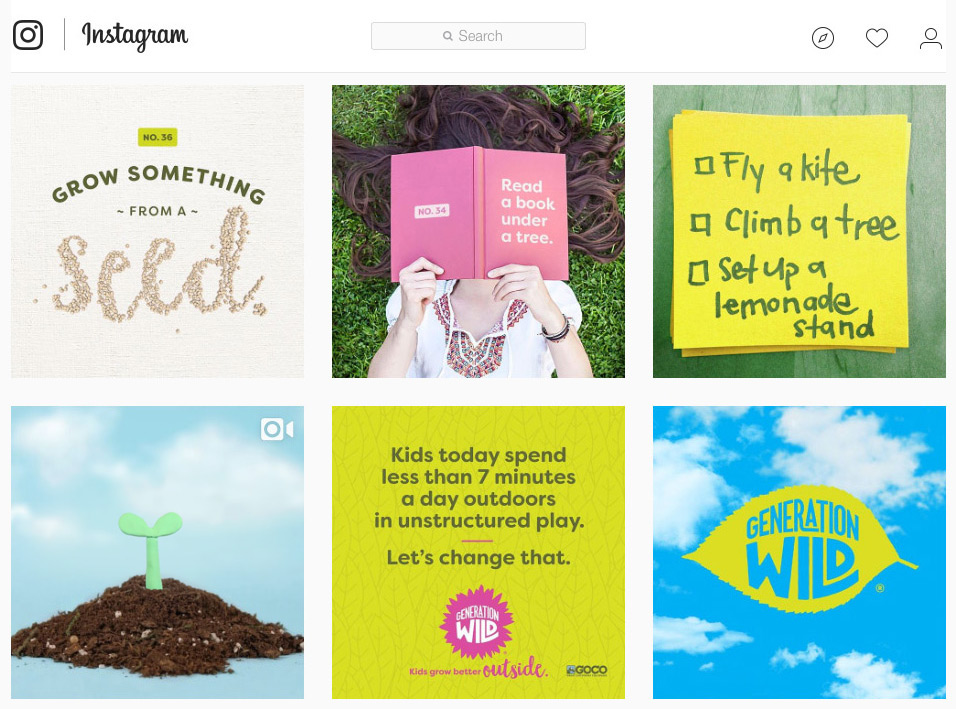

As it turned out, GOCO wasn’t the only organization that loved Generation Wild. We helped recruit more than 50 others to join the cause, including the U.S. Forest Service, The Nature Conservancy, REI, Cabela’s and Girl Scouts of Colorado.
After only a few days of launch, word is spreading. The campaign was has been featured on television news channels, Colorado Public Radio, the Denver Post, and more.
And moms are doing just what we thought they’d do, spreading the message among friends and family with hashtag, #100ThingsToDo. And we’ve had over 20,000 visits to the website in the first few weeks.

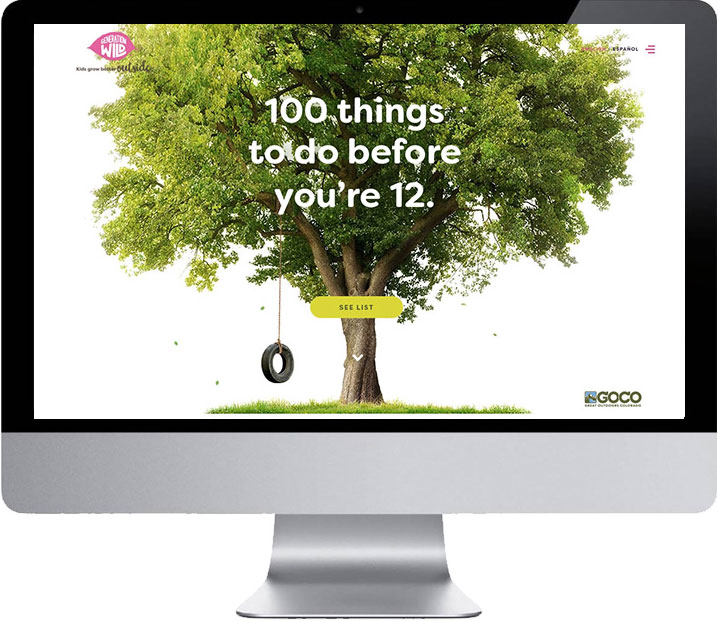
Learn more about the campaign at GenerationWild.com. Follow it on Facebook and find it on Instagram at @GenerationWildColorado.
Your move, Minecraft.
A common mistake most social marketing efforts make. And how to fix it.
Stanford Social Innovation Review took a closer look at diagnosing why so many social marketing campaigns are ineffective and a framework for making them more successful.
This was especially of interest to our team, as Sukle’s work for Denver Water was highlighted in the report as an example of a successful approach to social marketing. After a decade long run, our Denver Water conservation campaign enjoyed unparalleled success dealing with an issue that dozens of entities had previously tried to take on unsuccessfully.
So what are the key considerations for marketers and organizations trying to tackle a social issue and create real change?


There’s a tendency for organizations creating a social marketing effort to focus on building up awareness of the issue or cause, believing that will address the problem. This goes a long way to explaining why we have Co-dependency Awareness Month, Glaucoma Awareness Month, National Mentoring Month, Radon Action Month, Stalking Awareness Month and a dozen others in January alone that we’ll spare you from reading.
The assumption made here is that if people just understood what was happening, they would change their behavior. This comes from a communication theory introduced in the 1980s called the Information Deficit Model which was built on the notion that the key issue at hand is a lack of knowledge. And once your audience becomes aware, they adjust their behavior accordingly.
Unfortunately, there’s abundant research that shows that people who are only given more information are unlikely to change attitudes, beliefs and behavior. And as marketers for non-profits and for-profits alike, that’s not acceptable.
So how do brands and organizations go beyond awareness to an effort that creates change?
Four important aspects to consider:
- define the audience to target as specifically as possible
- create a compelling message with clear calls to action
- develop a theory of change
- use the right messenger
Defining the Audience
Audience segmentation is about making tough decisions. By selecting the group of people who can make the most dramatic impact on achieving your goal, you put yourself in the best position to create real change. It’s also critical that you really understand the mindset and attitudes your audience has and what the greater context around those might be. Without that understanding, it’s difficult to convey the right idea to them in a way that they’ll respond to.
In the case of Denver Water, we started by targeting a mindset: very eco-conscious people. Although small in number, we knew they would be very receptive to the message and would help us by creating initial momentum behind the idea, and then carrying and amplifying the message within their social circles.


Create a Compelling Message with Clear Calls to Action
By truly understanding the audience including their attitudes, beliefs and the context that’s behind it, you can determine how best to craft a messaging strategy that will resonate with them. As important is to create clear calls to action that tie into the attitude or behavior change you’re seeking to make.
For example, because we spent a great deal of time understanding our audience for Denver Water, we uncovered their sensitivity to the concept of waste. That helped inform the campaign message: Use Only What You Need. It didn’t feel like a sacrifice. A message that spoke to conserving or saving would not have had nearly the same impact.
Our overarching goal was to change the culture of water conservation in Denver, but to do that, we needed to chip away at specific behaviors that contributed to waste. Incorrect sprinkler settings. Unaddressed leaks. Outdoor watering during the heat of the day. So, we focused each campaign on targeting one specific behavior which we educated our audience on while we promoted the desired behavior, like “water two minutes less”.


Develop a Theory of Change
So how do all these pieces come together? Is it blind luck? Hardly.
Creating an effective social marketing campaign requires developing a theory of change, which is a road map for how we can get from today’s status quo to the desired goals that we’ve sought to achieve. That entails creating a plan that maps objectives, strategies, tactics and evaluation. If something in the plan doesn’t tie back to influence a change in attitudes or behaviors, it doesn’t have a place in your effort.
Use the Right Messenger
Even if you’ve identified the right audience, message and a theory of change, there’s still a great deal of importance when it comes to identifying the right messenger to deliver that message.
Persuading people to adopt a new way of thinking or behaving isn’t easy, especially if it runs counter to their current beliefs. That influence has to come from the right source, messengers they’ll trust and listen to.
That’s why tonality and the execution for Denver Water was so critical. Utilities are not exactly everyone’s favorite entities and people are very reactive to being preached to. So we wanted to make Denver Water come across like the anti-utility, like your neighbor instead. We wanted every interaction someone had with the campaign to be fun and unexpected. That approach, combined with our eco-conscious audience serving as ambassadors for the campaign helped embed it within the culture of Denver rapidly. We used non-traditional marketing and provided tactics like yard signs, t-shirts and other schwag to give people an opportunity to participate and show their visible support, which helped transform it into a groundswell of passionate supporters.
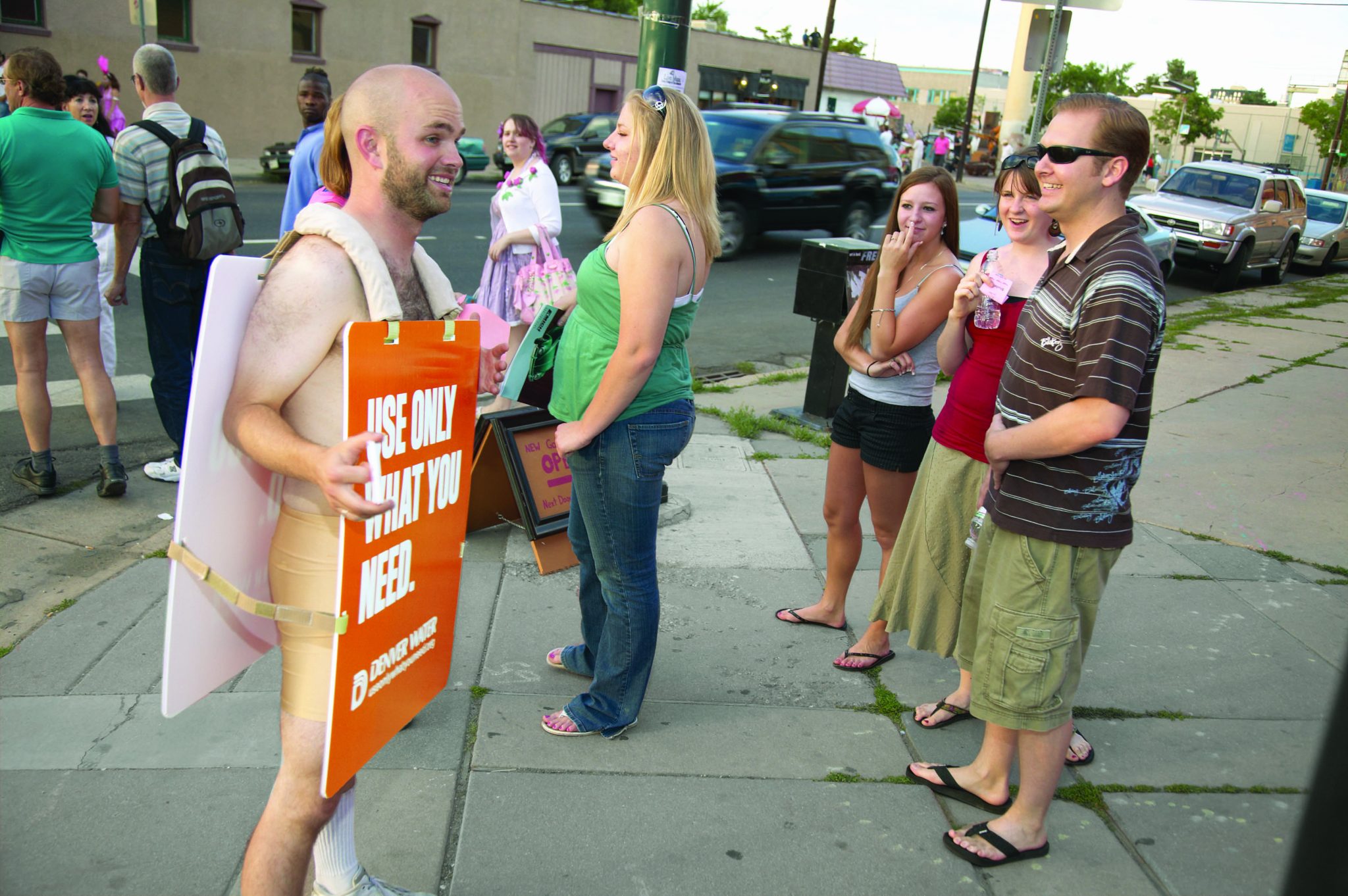

This approach helped to amplify and accelerate success for Denver Water, touted as one of the most successful social marketing campaigns. At the start of the campaign, we were tasked with a ten-year goal of reducing water consumption by 22%. The campaign delivered a 21% reduction in the first year.



